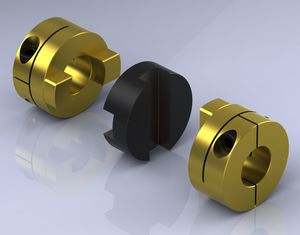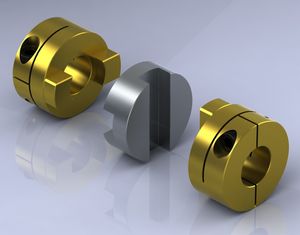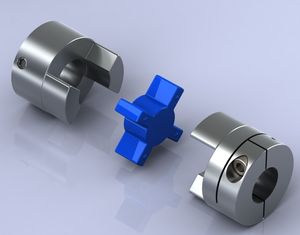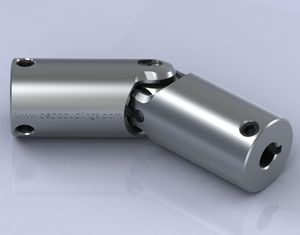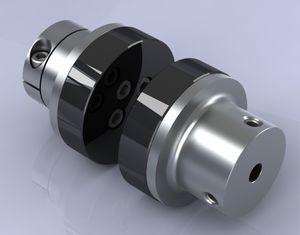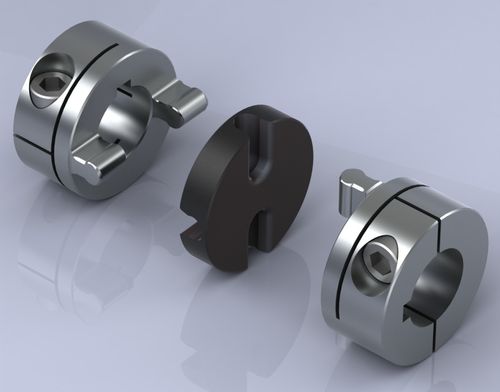

- Products
- Catalogs
- News & Trends
- Exhibitions
Oldham coupling UI seriesflange
Add to favorites
Compare this product
Characteristics
- Type
- Oldham
- Installation system
- flange
- Torque
Min.: 0.08 Nm
(0.059 ft.lb)Max.: 59 Nm
(43.5162 ft.lb)- Rotational speed
Min.: 4,000 rpm
(25,132.74 rad.min-1)Max.: 6,000 rpm
(37,699.11 rad.min-1)
Description
Advantages:
Protects driven component by serving as a mechanical “fuse” – an inexpensive replaceable plastic midsection shears under excess load
Protects support bearings by exerting consistently low reactive forces, even under large misalignments
Zero backlash and moderate torsional stiffness
Electrical insulation
Accommodates large radial misalignment in a short length
Accommodates much larger angular misalignment then standard Oldham coupling
Easy installation in blind or difficult installations when through-bores are used
Economically priced compared to other couplings with similar performance characteristics
Inexpensive replaceable wear element
Low moment of inertia
Disavantages:
Lower peak torque and torsional stiffness than standard Oldham coupling
Slightly non-homokinetic transmission (that is, the driven and driving shafts don’t move at exactly the same speed throughout one rotation) when angular misalignment is significant
Axial reactive loads exerted on support bearings when torque approaches maximum
Accommodates only a small axial misalignment
Typical Applications:
Types UC and UI are used in light-duty applcations with large angular misalignment, including instrumentation and positioning systems; UA is used in heavy-duty mission-critical high-torque applications requiring a fail-safe coupling, including servo-controlled valves, mining, and crushing equipment.
Catalogs
No catalogs are available for this product.
See all of OEP Couplings‘s catalogs*Prices are pre-tax. They exclude delivery charges and customs duties and do not include additional charges for installation or activation options. Prices are indicative only and may vary by country, with changes to the cost of raw materials and exchange rates.

